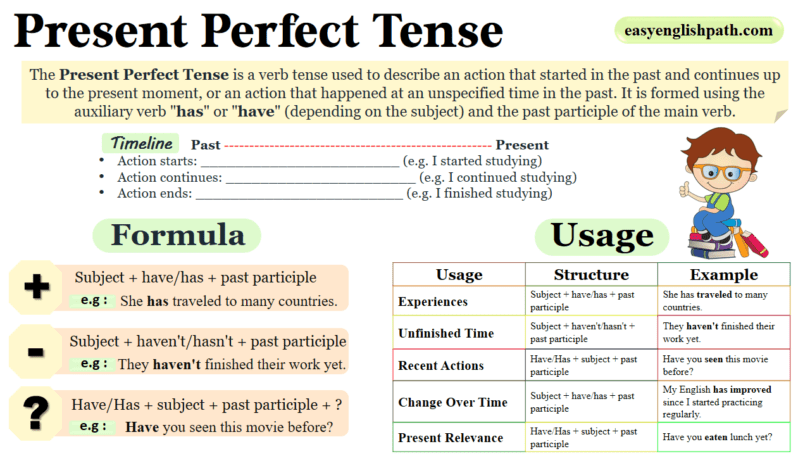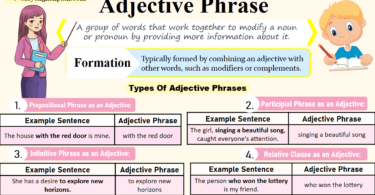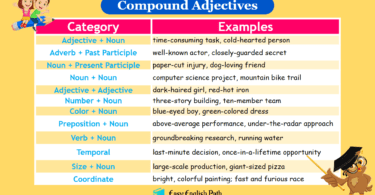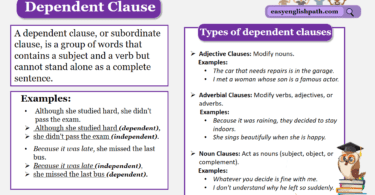The Present Perfect Tense helps us talk about things that happened before now but don’t have a specific time. We use it when we want to show how past actions connect to the present. It’s made by adding ‘Have’ or ‘Has’ before a verb’s past form. This Tense in grammar is useful for telling stories, discussing experiences, or talking about actions with a connection to the present moment.
What is Present Perfect Tense?
The present perfect tense is a way to talk about actions or events that happened in the past but are still relevant to the present moment. It’s formed using Have or Has with the past participle of the verb. It’s like saying, This thing happened, and it’s important now. People use it to talk about experiences, accomplishments, or things that started in the past and are still true. For Example:
We have lived here for five years.
They have seen that movie already.
He has eaten lunch.
Structure of the Present Perfect Tense:
The structure of the present perfect tense is formed by using the auxiliary verb ‘Have or Has’ ( but it depends on the subject) followed by the past participle of the main verb.
- For subjects: I, you, we, and they, we use have.
- For the subject: he, she, or it, we use has.
Here’s the basic structure:
Subject+ have/has +past participle
Examples:
I have seen that movie.
She has finished her homework.
In negative sentences, not is added after have or has:
Subject+ have /has +not +past participle
Examples:
I have not seen that movie.
She has not finished her homework.
In questions, the auxiliary verb is inverted with the subject:
Have/Has+ subject+ past participle+?
Examples:
Have you seen that movie?
Has she finished her homework?
How is the Present Perfect Tense Formed?
The Present Perfect Tense in English is formed using the auxiliary verb have. Here’s a breakdown:
Affirmative Form:
In the affirmative form of the Present Perfect Tense, we make sentences to indicate that an action has taken place at some unspecified time before now, or that it started in the past and has continued up to the present moment. For Example:
I have finished my homework.
You have visited Paris.
Negative Form:
In the negative form of the Present Perfect Tense, we create sentences to express that an action has not occurred or has not been completed up to the present moment. For Example:
I have not finished my homework.
You have not visited Paris.
Question Form:
In the question form of the Present Perfect Tense, we create sentences to inquire about whether an action has occurred or whether it has been completed up to the present moment. For Example:
Have I finished my homework?
Have you visited Paris?
Time Expressions:
Time expressions are words or phrases that are used to indicate when an action the occurred or how long it has been happening. These type of expressions provide some additional context and help to clarify the specific period of the action. For Example:
She has just arrived.
Have you ever been to Paris?
Present Perfect Tense Rules:
| Subject | Have/Has | Past Participle | Example |
|---|---|---|---|
| I | have | eaten | I have eaten. |
| You | have | eaten | You have eaten. |
| He/She/It | has | eaten | He has eaten. |
| We | have | eaten | We have eaten. |
| They | have | eaten | They have eaten. |
| The cat | has | eaten | The cat has eaten. |
| John and Mary | have | eaten | John and Mary have eaten. |
| The students | have | eaten | The students have eaten. |
| My friends | have | eaten | My friends have eaten. |
| The dog | has | eaten | The dog has eaten. |
| The team | has | eaten | The team has eaten. |
| She | has | finished | She has finished her work. |
| We | have | visited | We have visited Paris. |
| You | have | read | Have you read this book? |
| They | have | seen | They have seen that movie. |
| I | have | lived | I have lived here for five years. |
| He | has | gone | He has gone to the store. |
| The children | have | played | The children have played in the park. |
| The company | has | grown | The company has grown significantly. |
You May Also Like This






